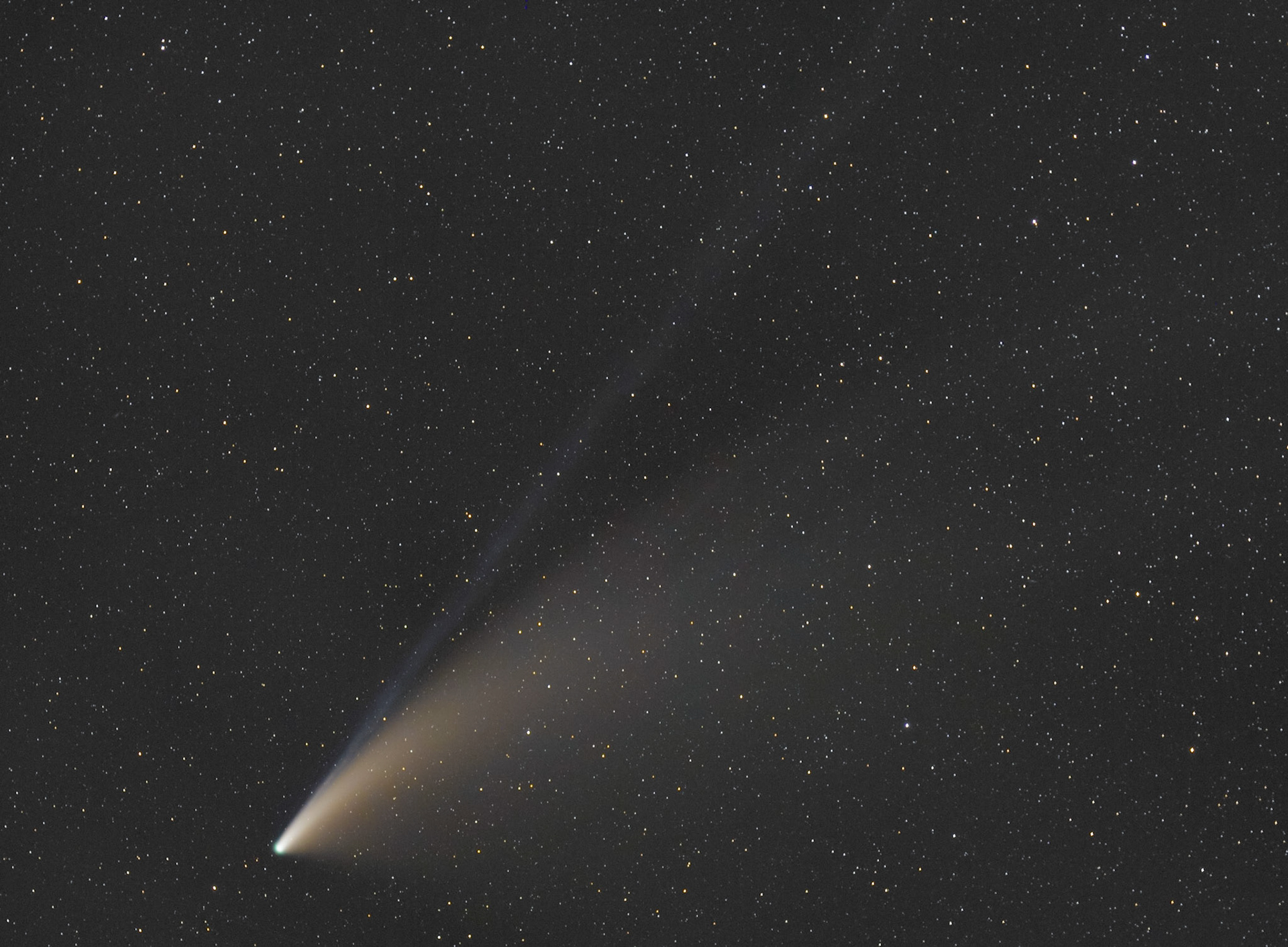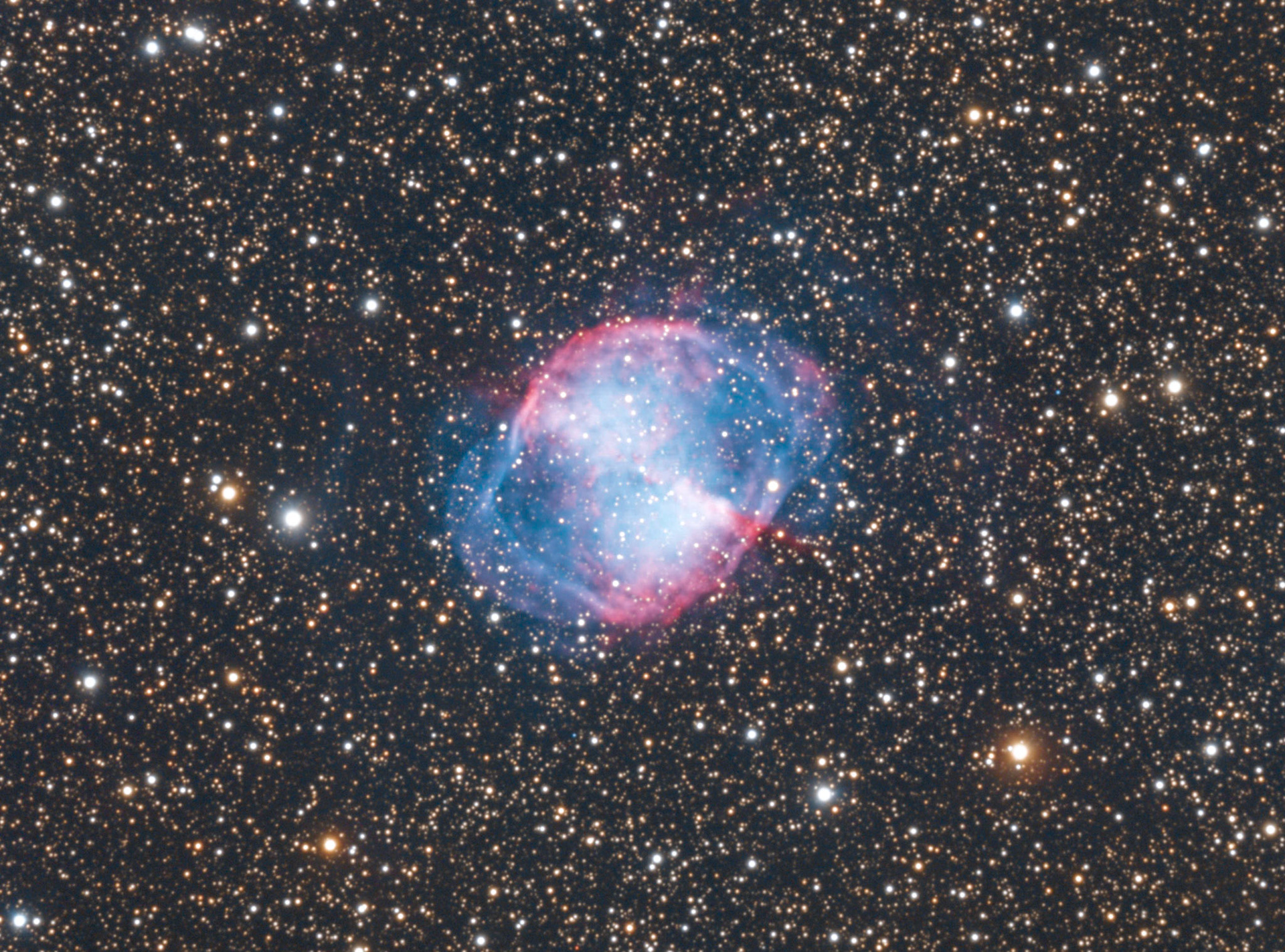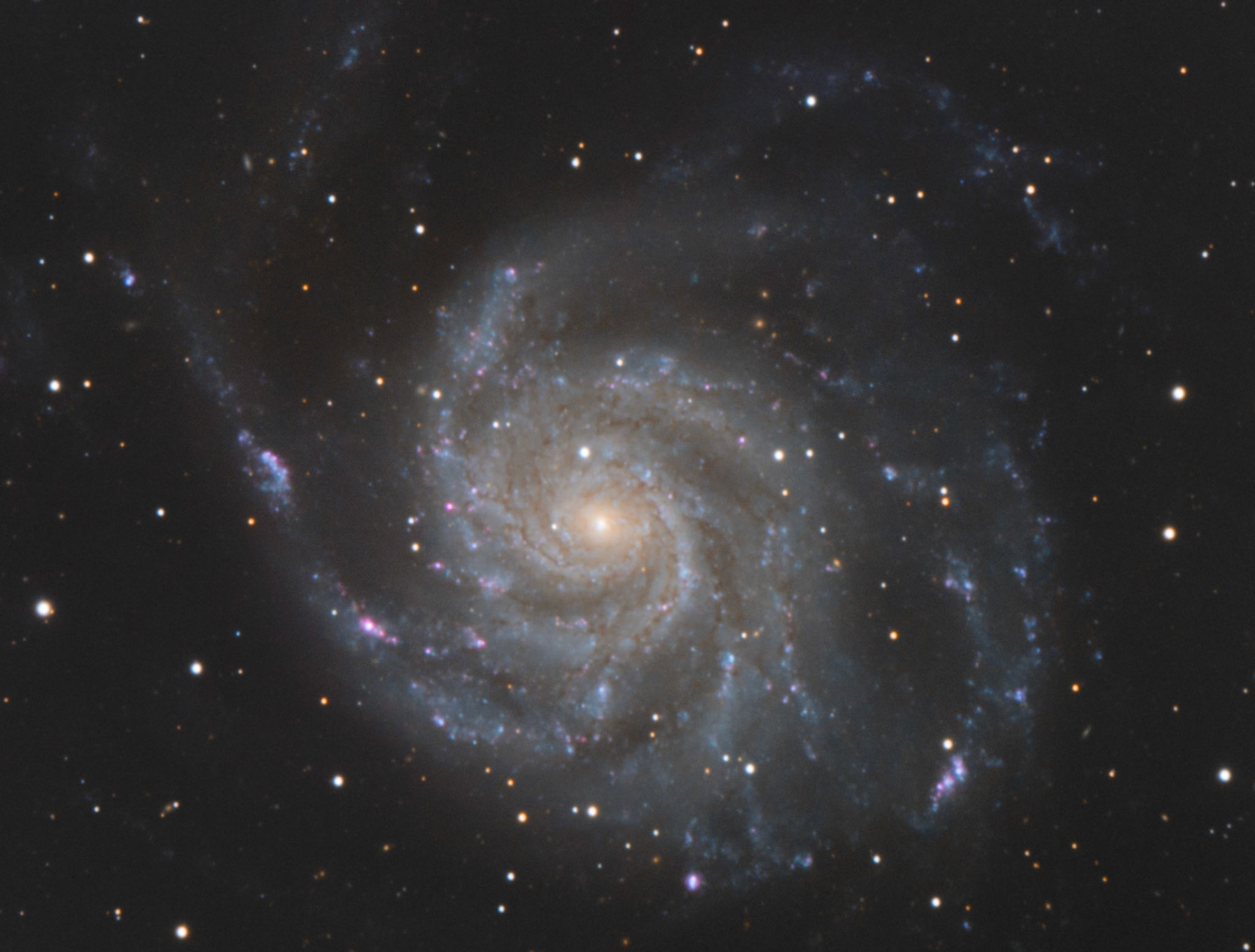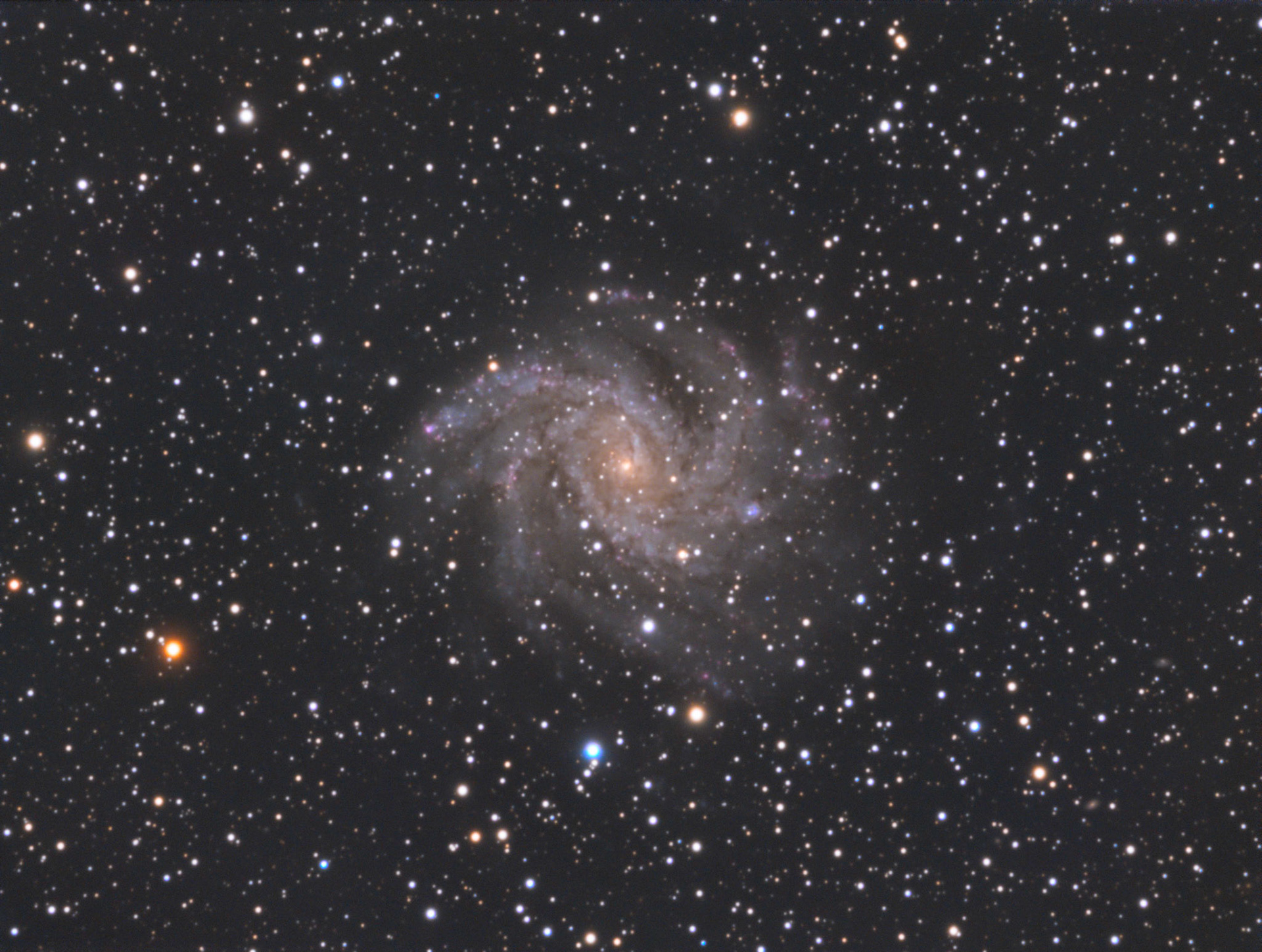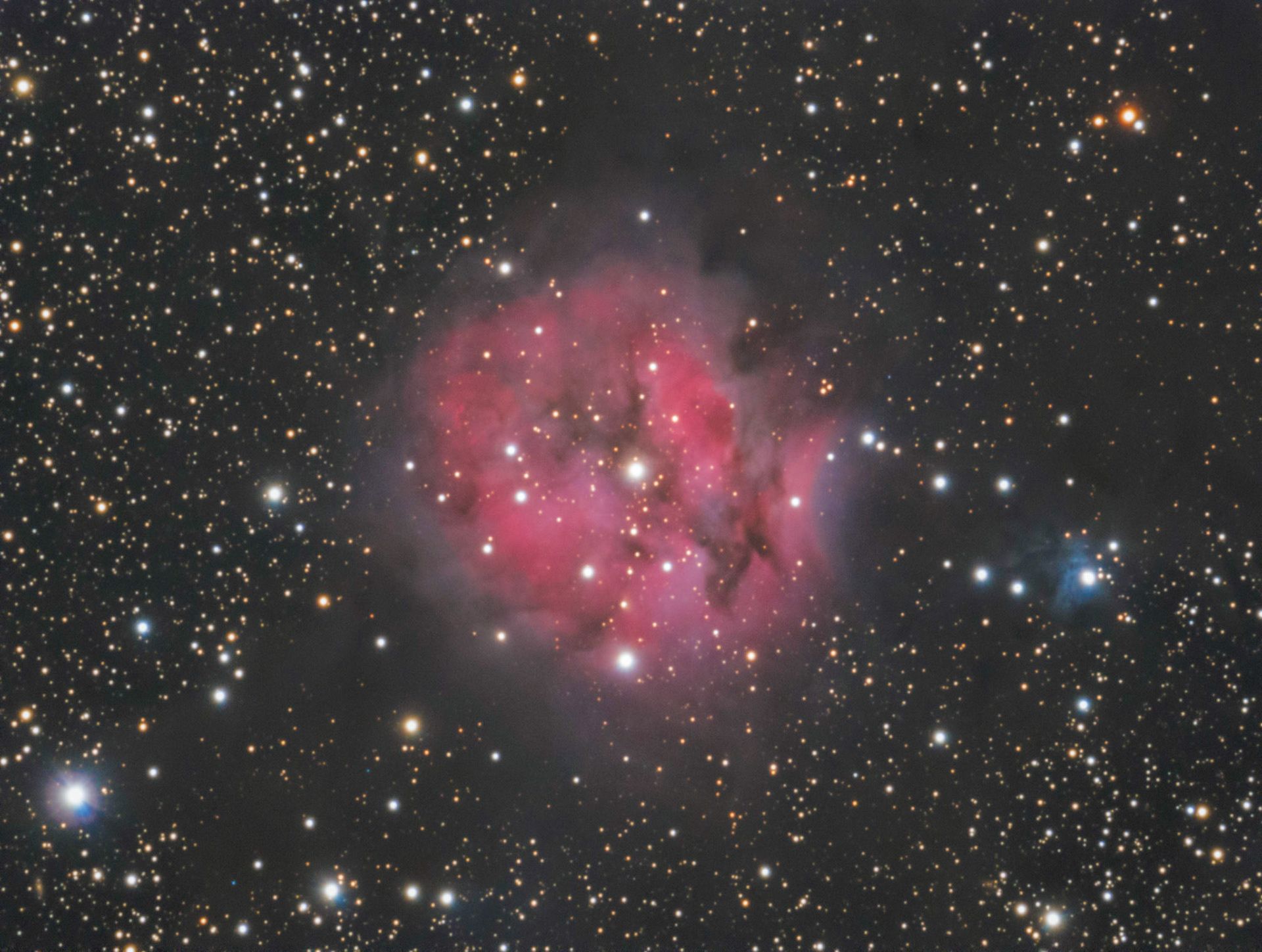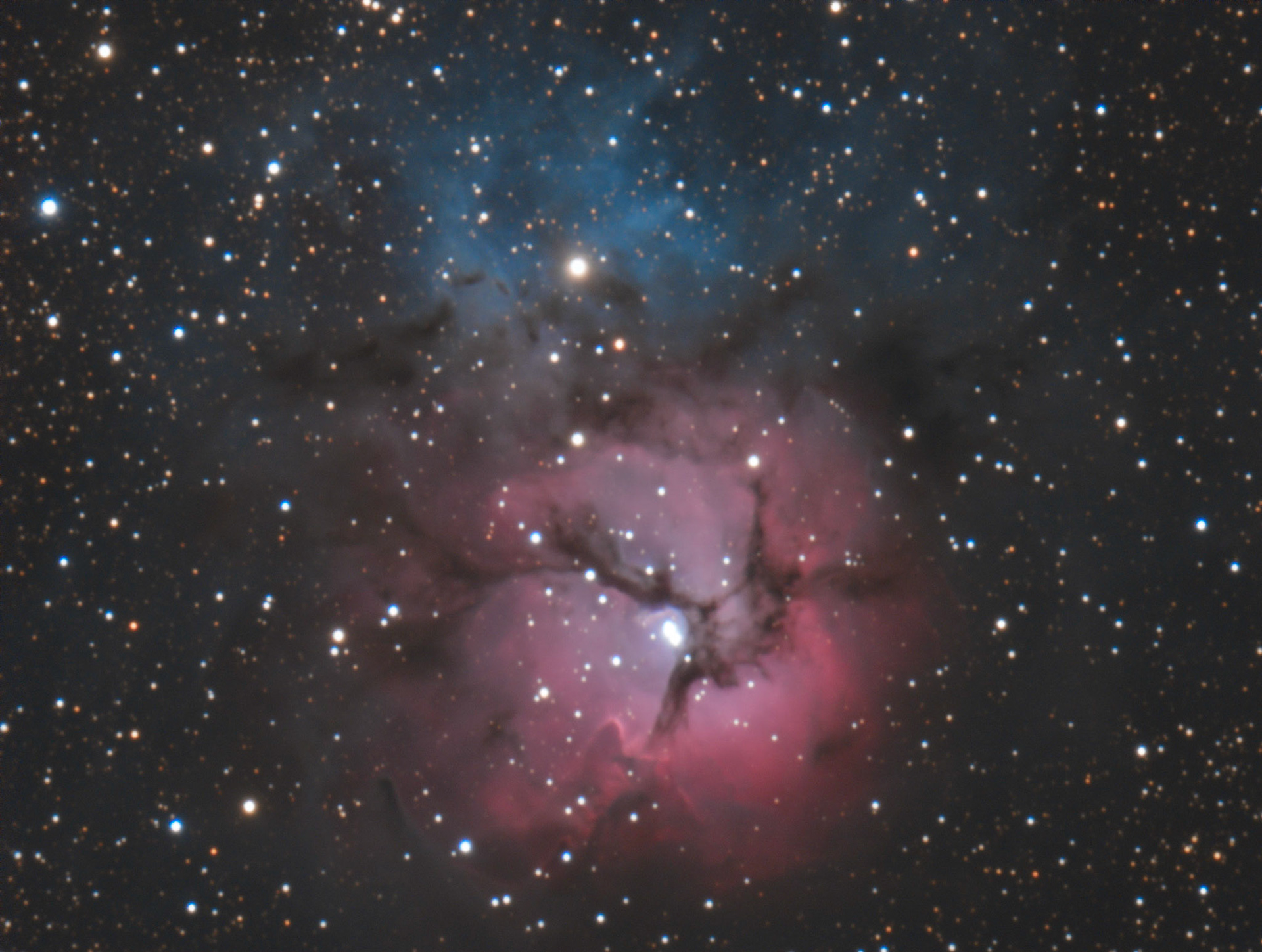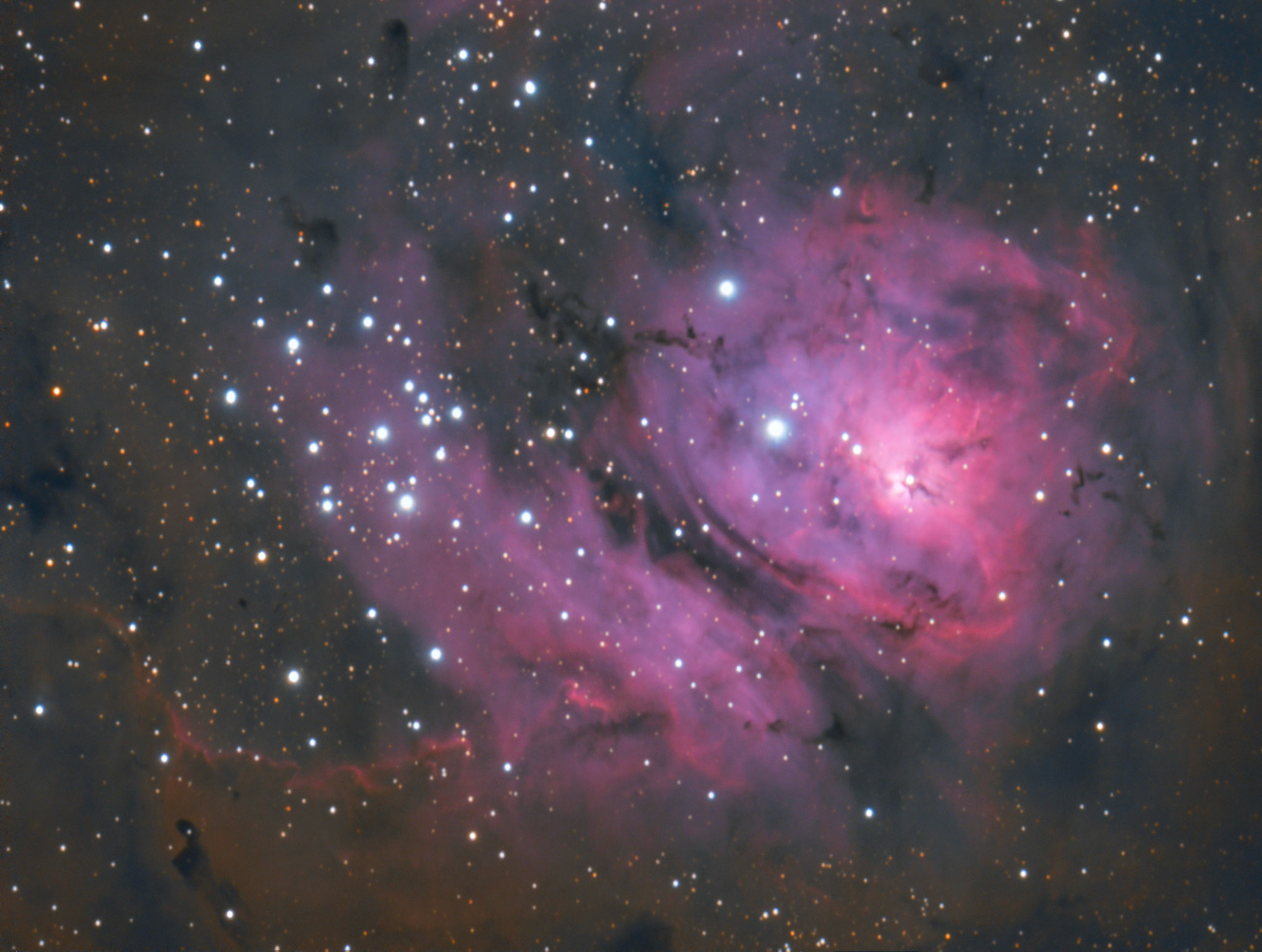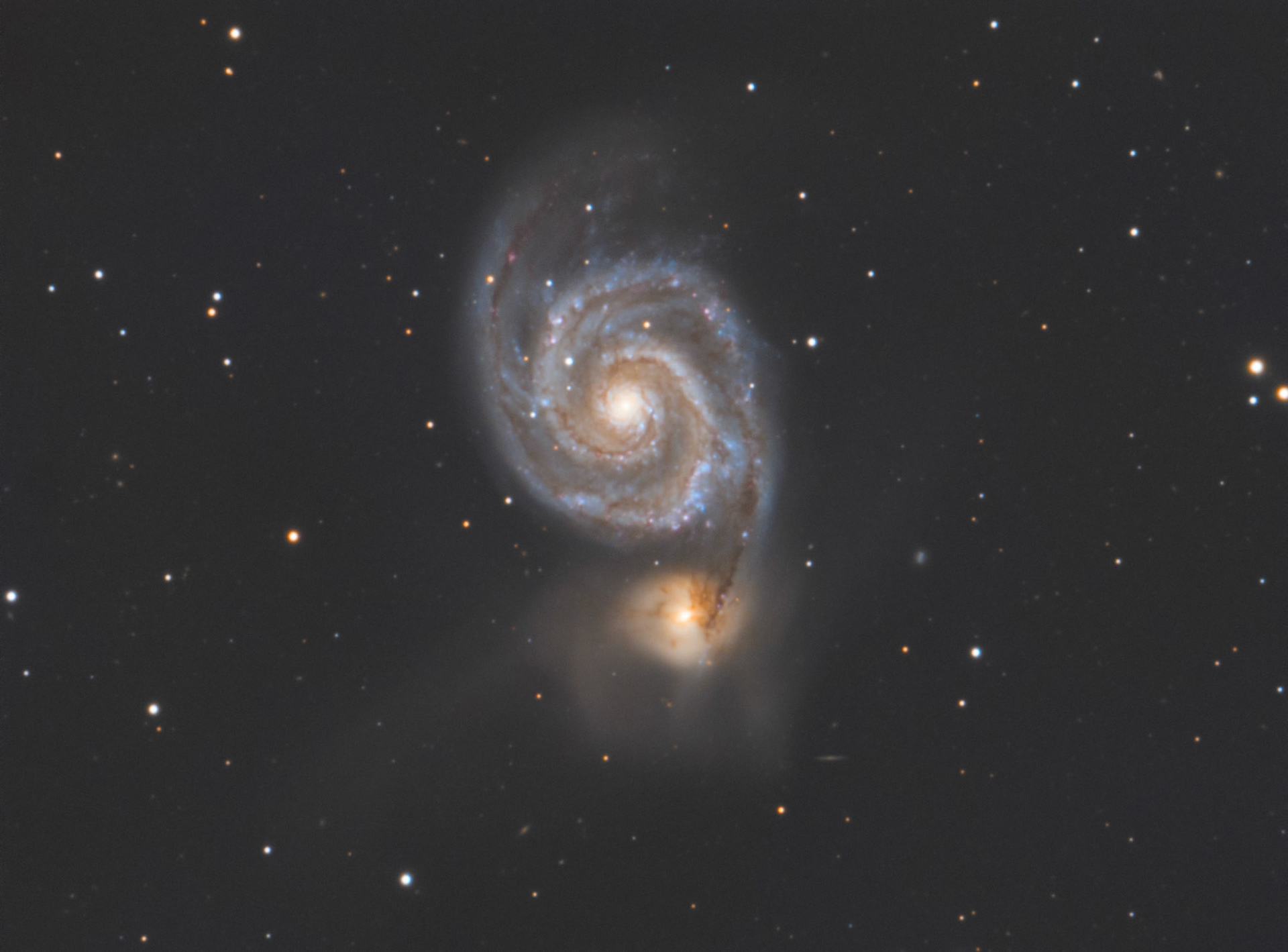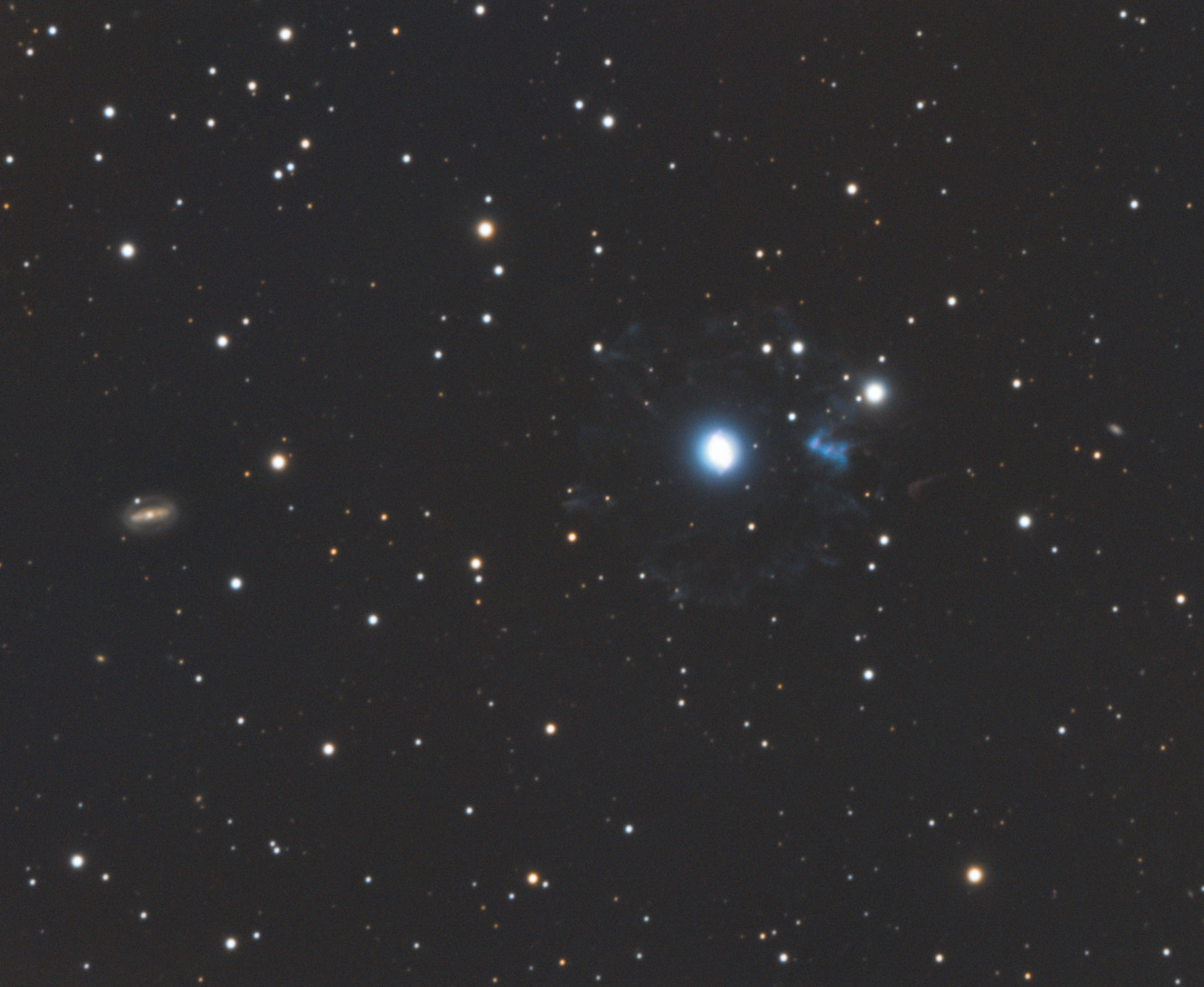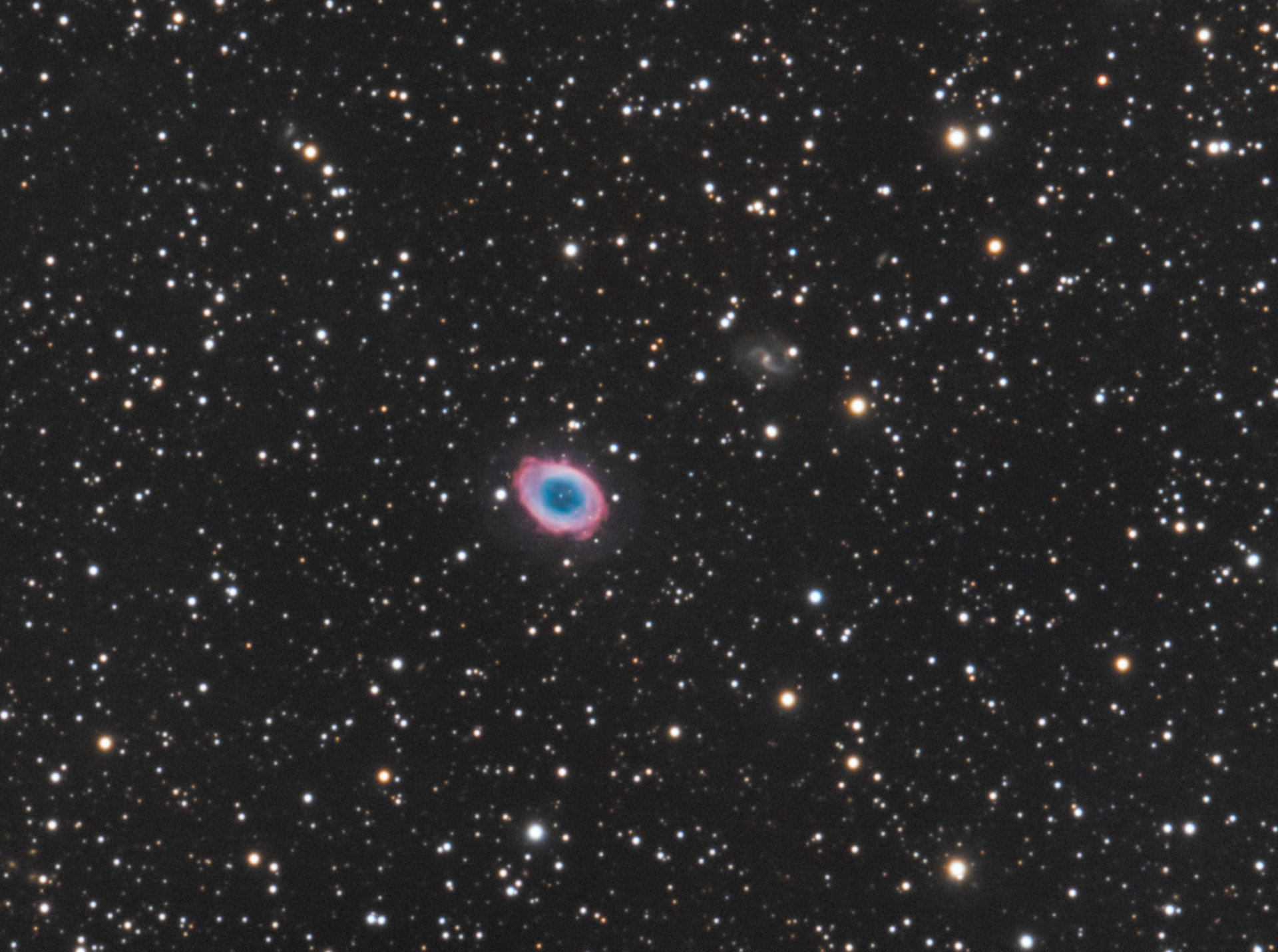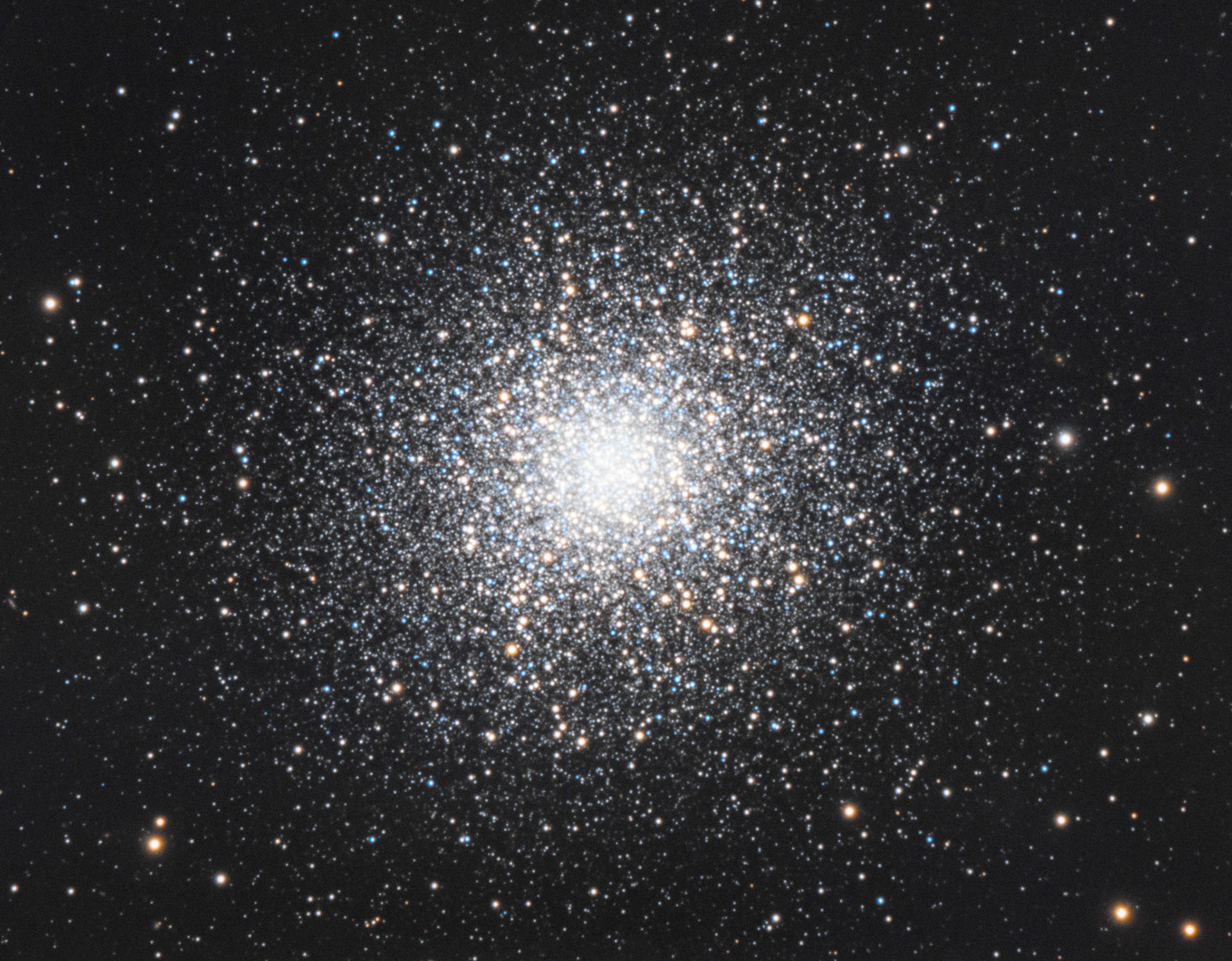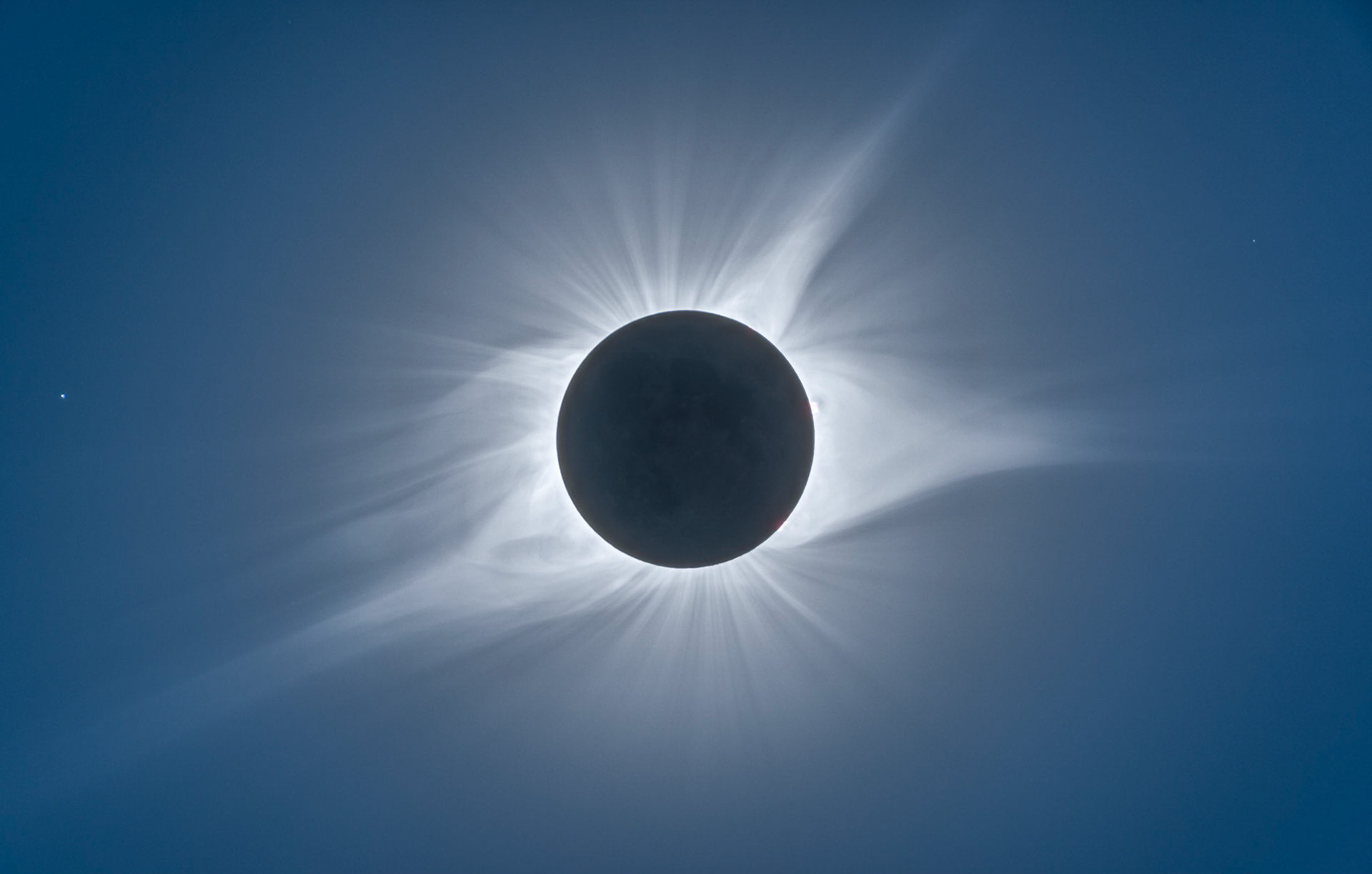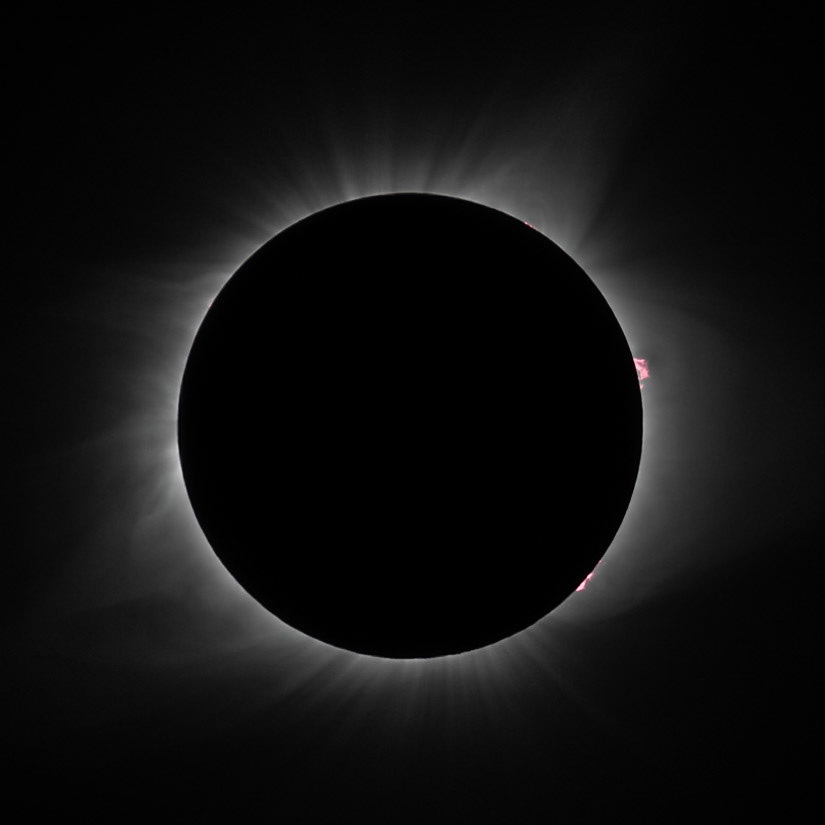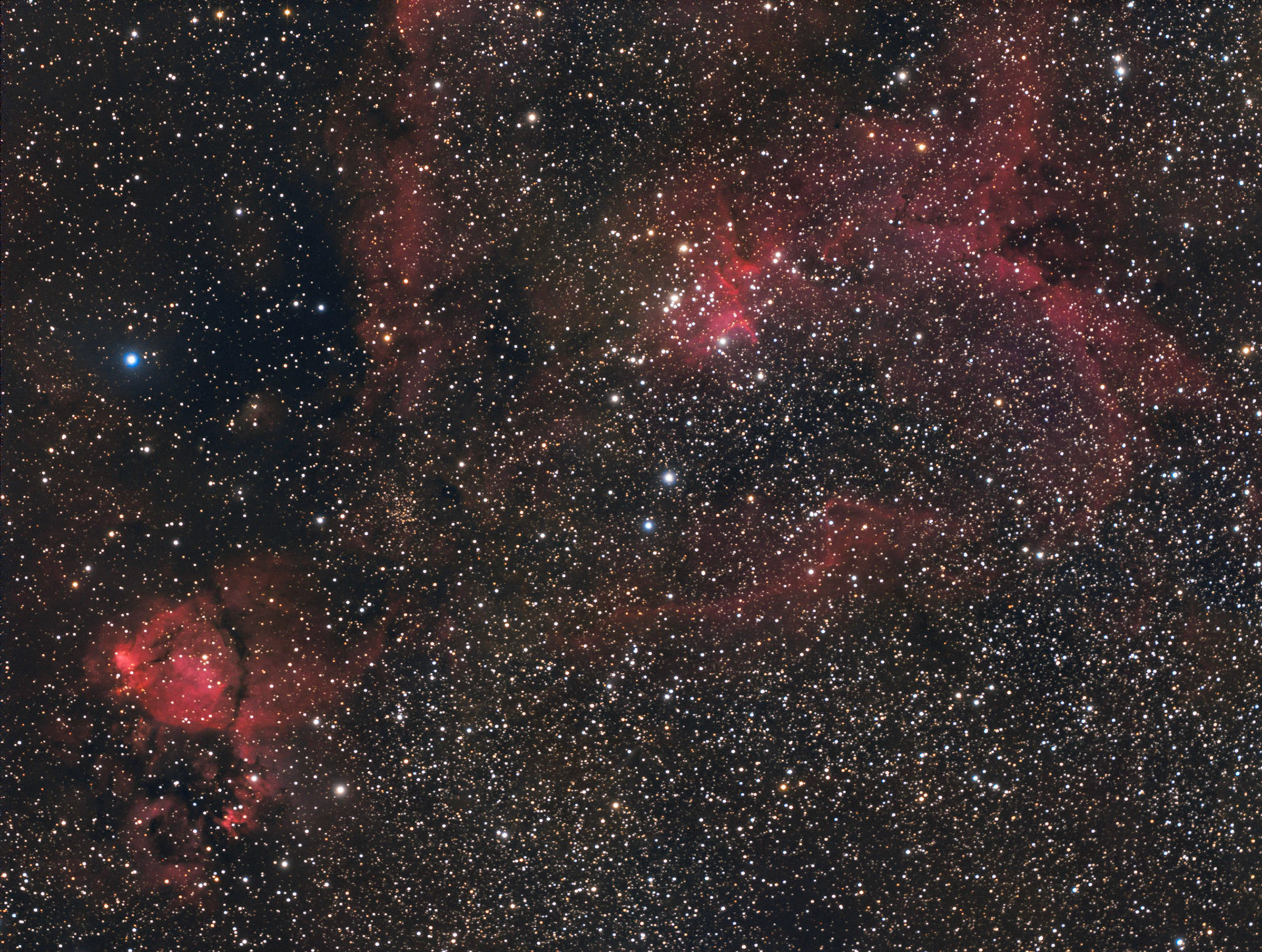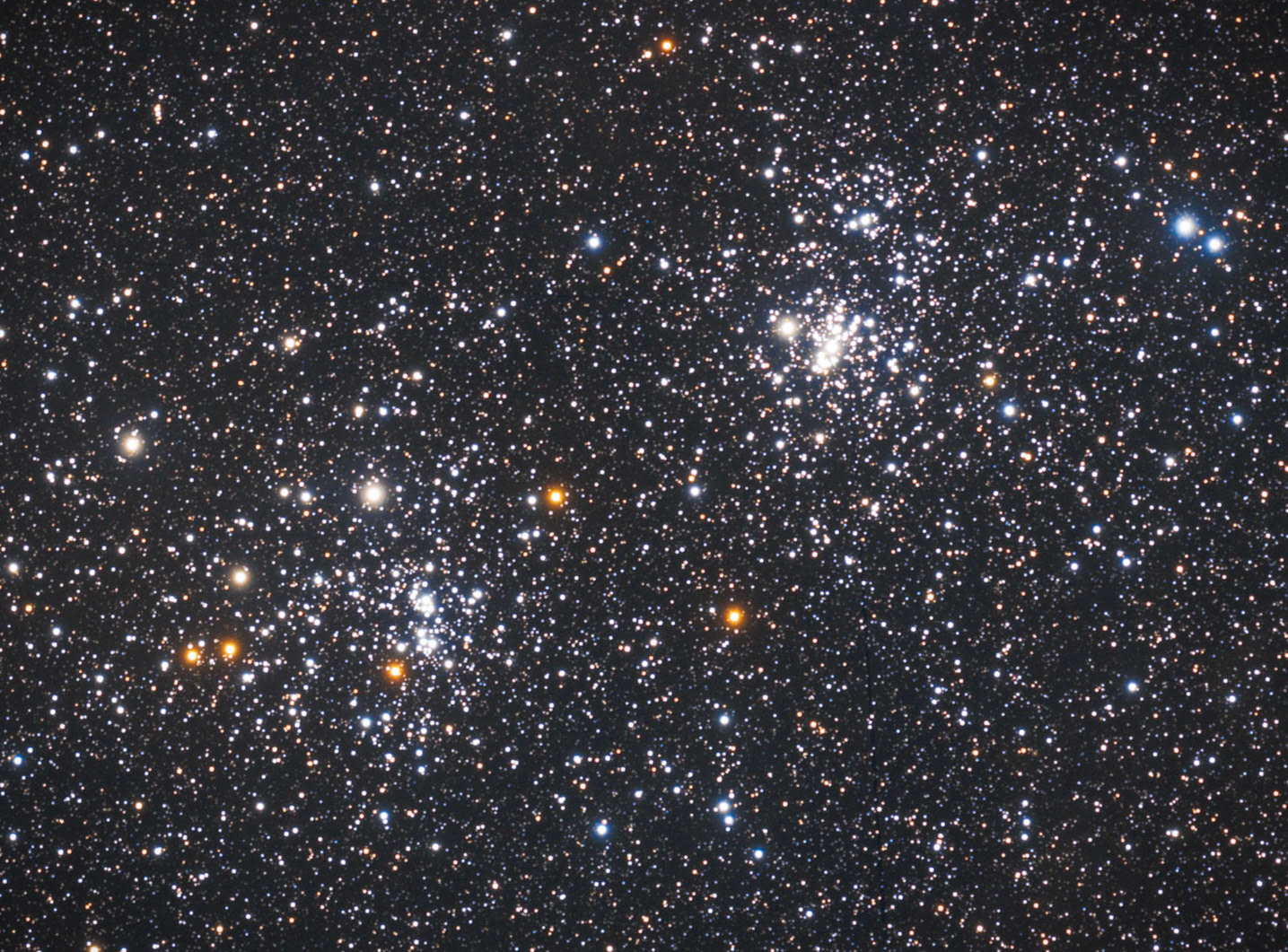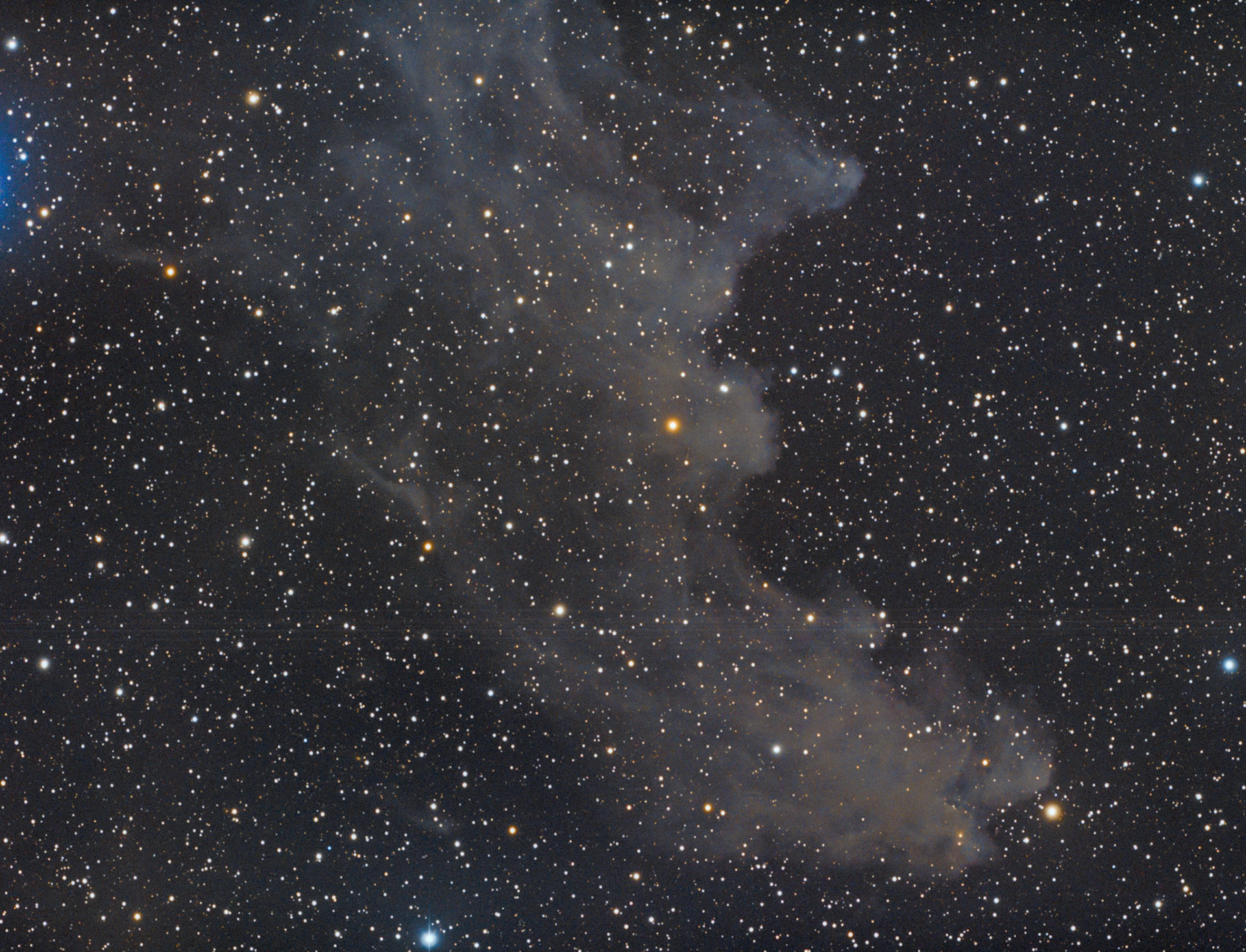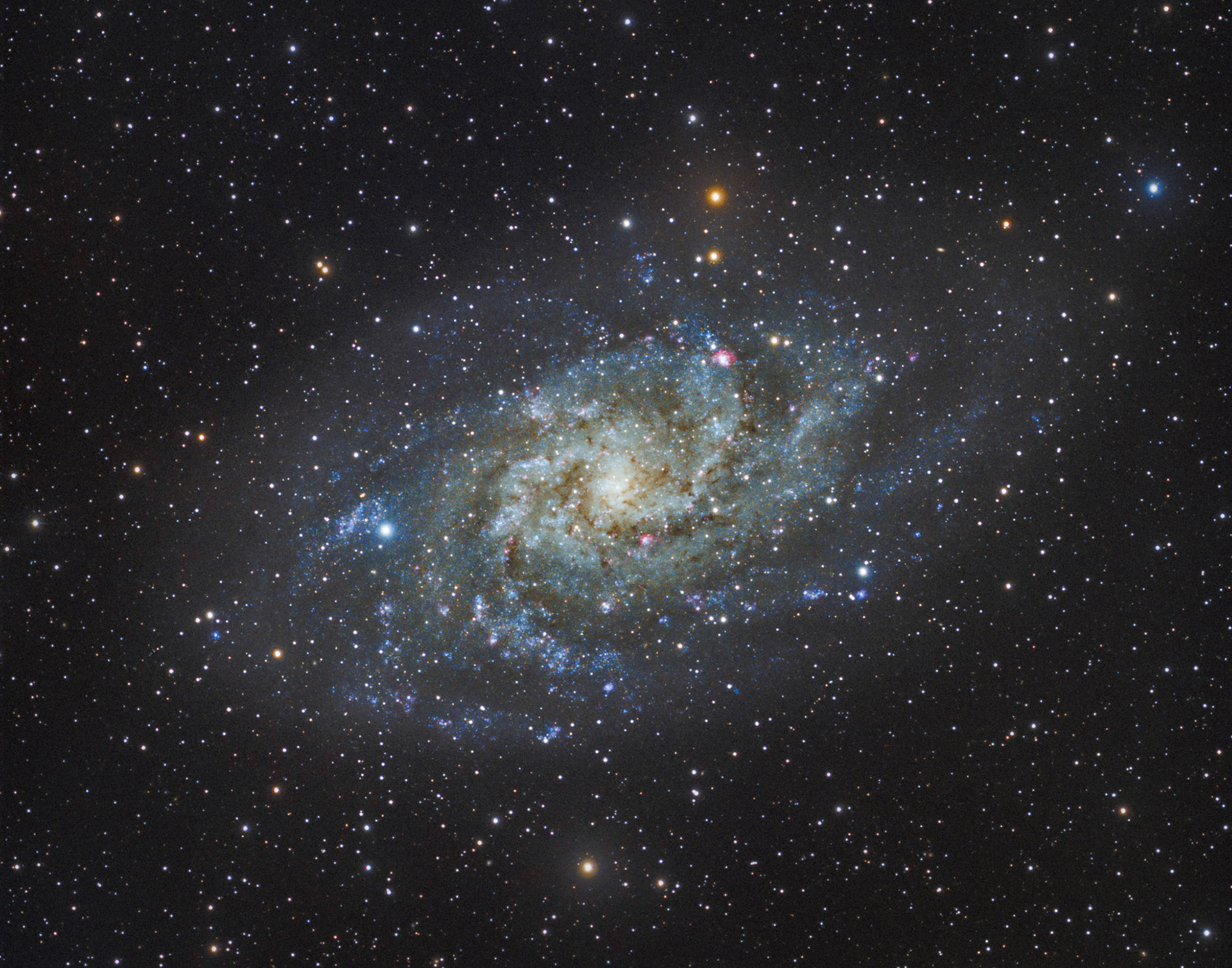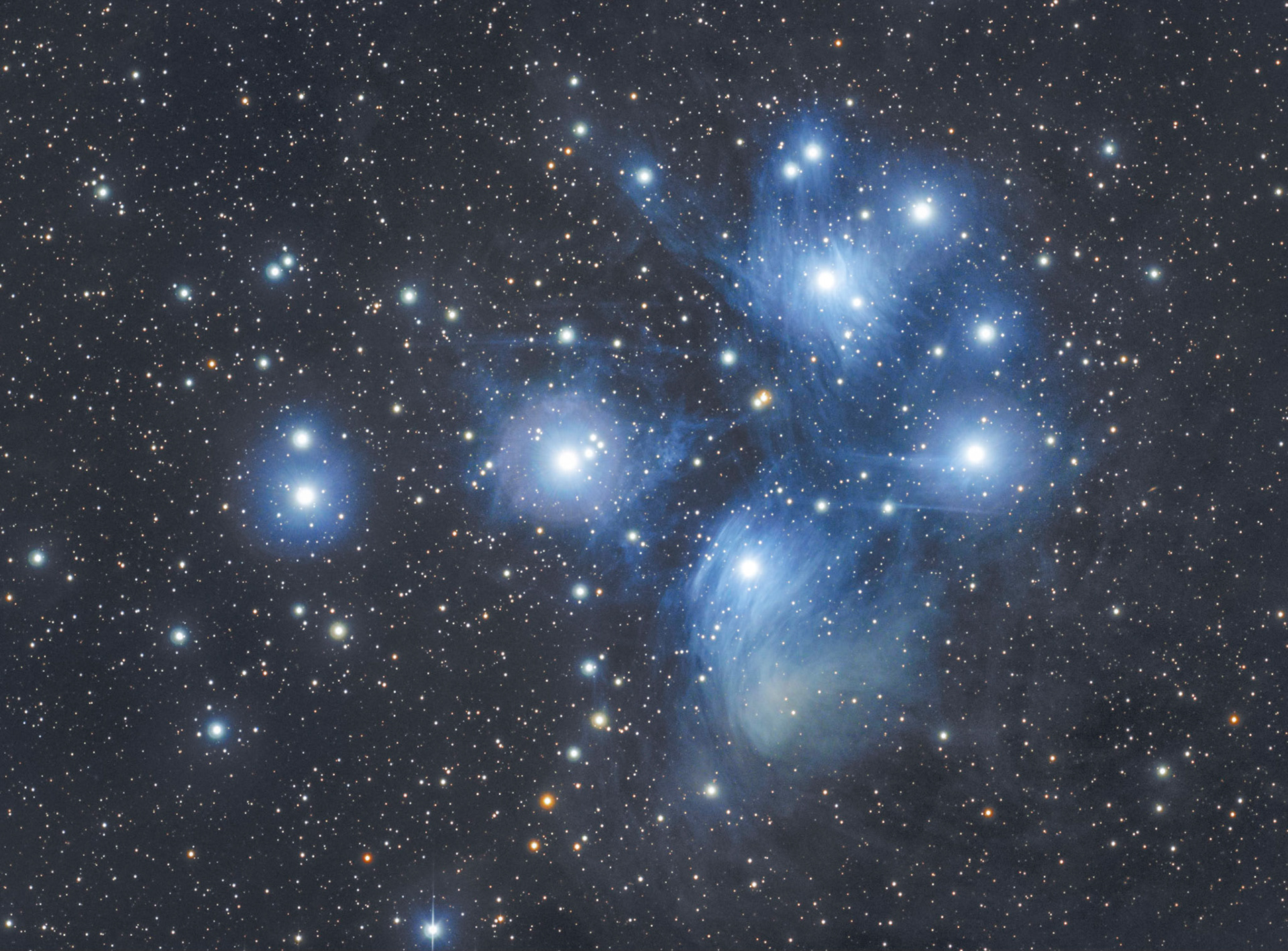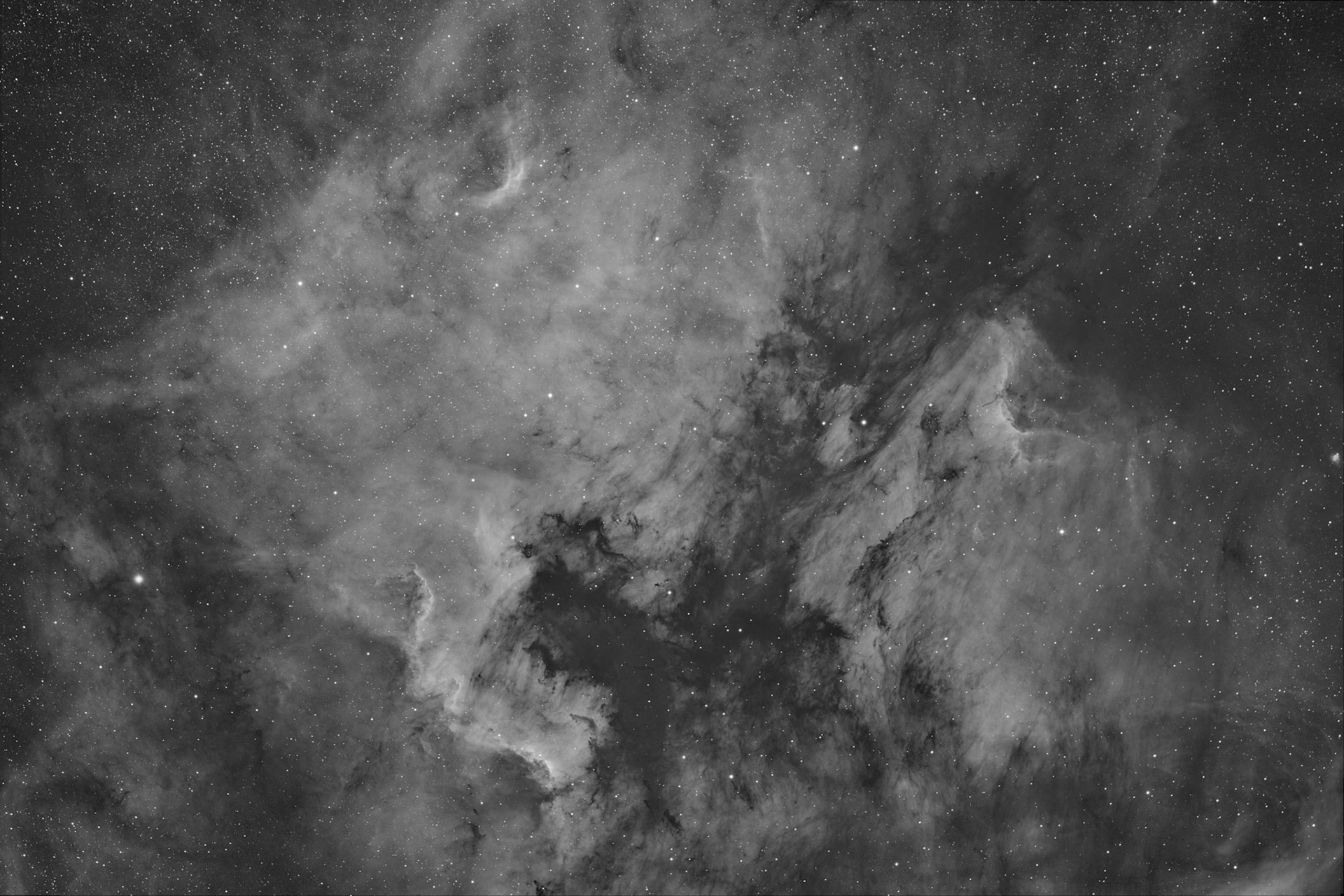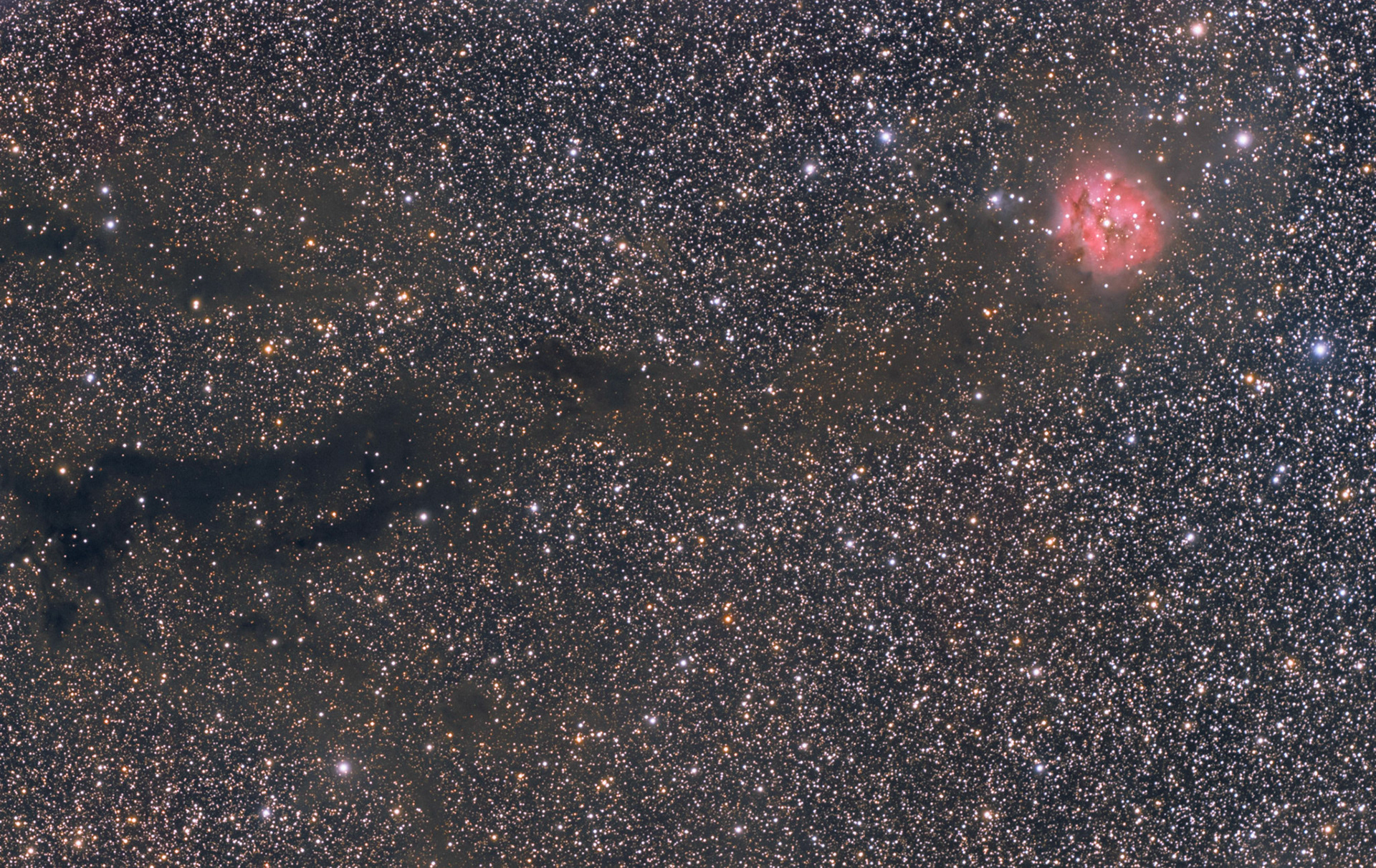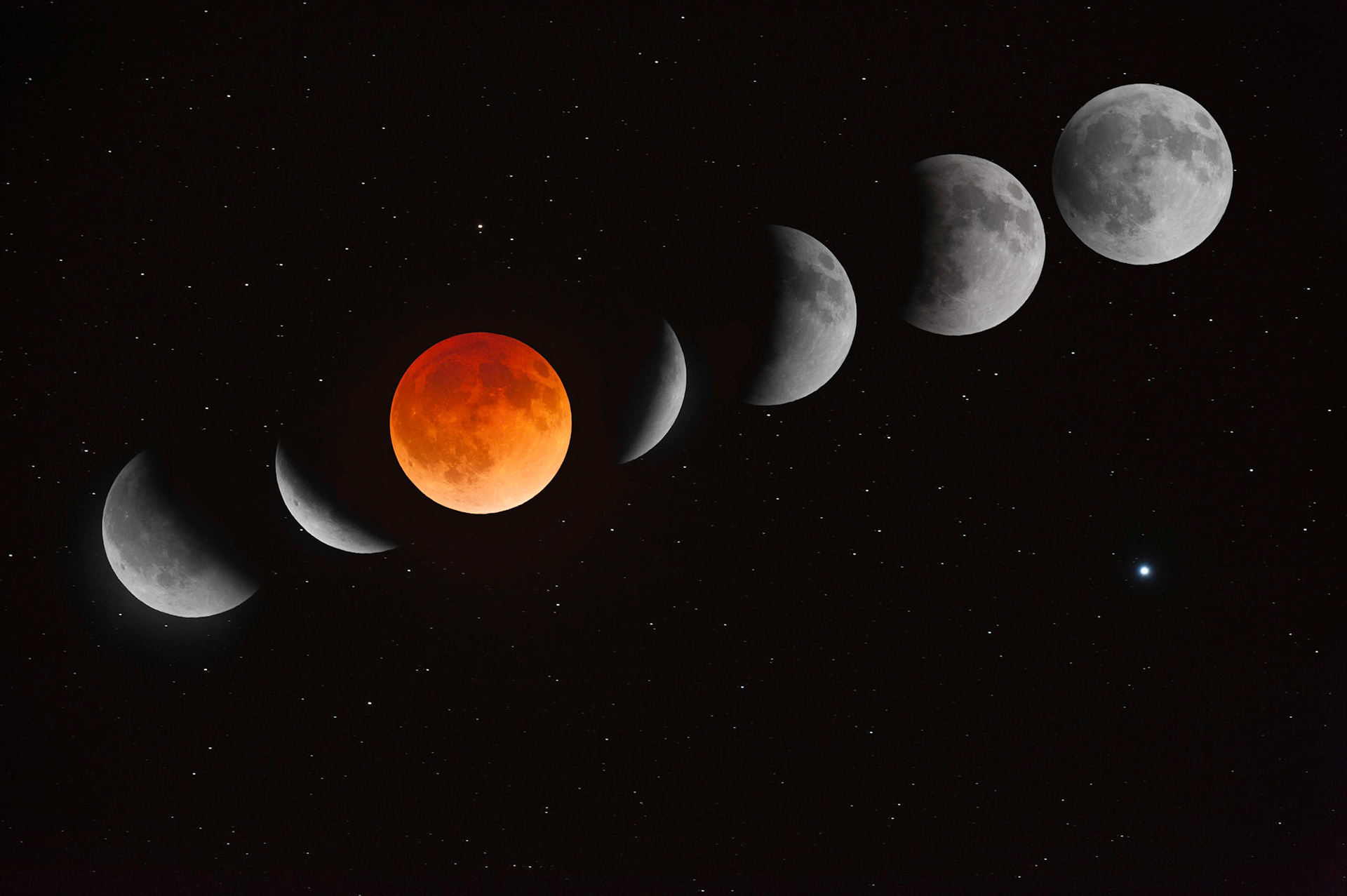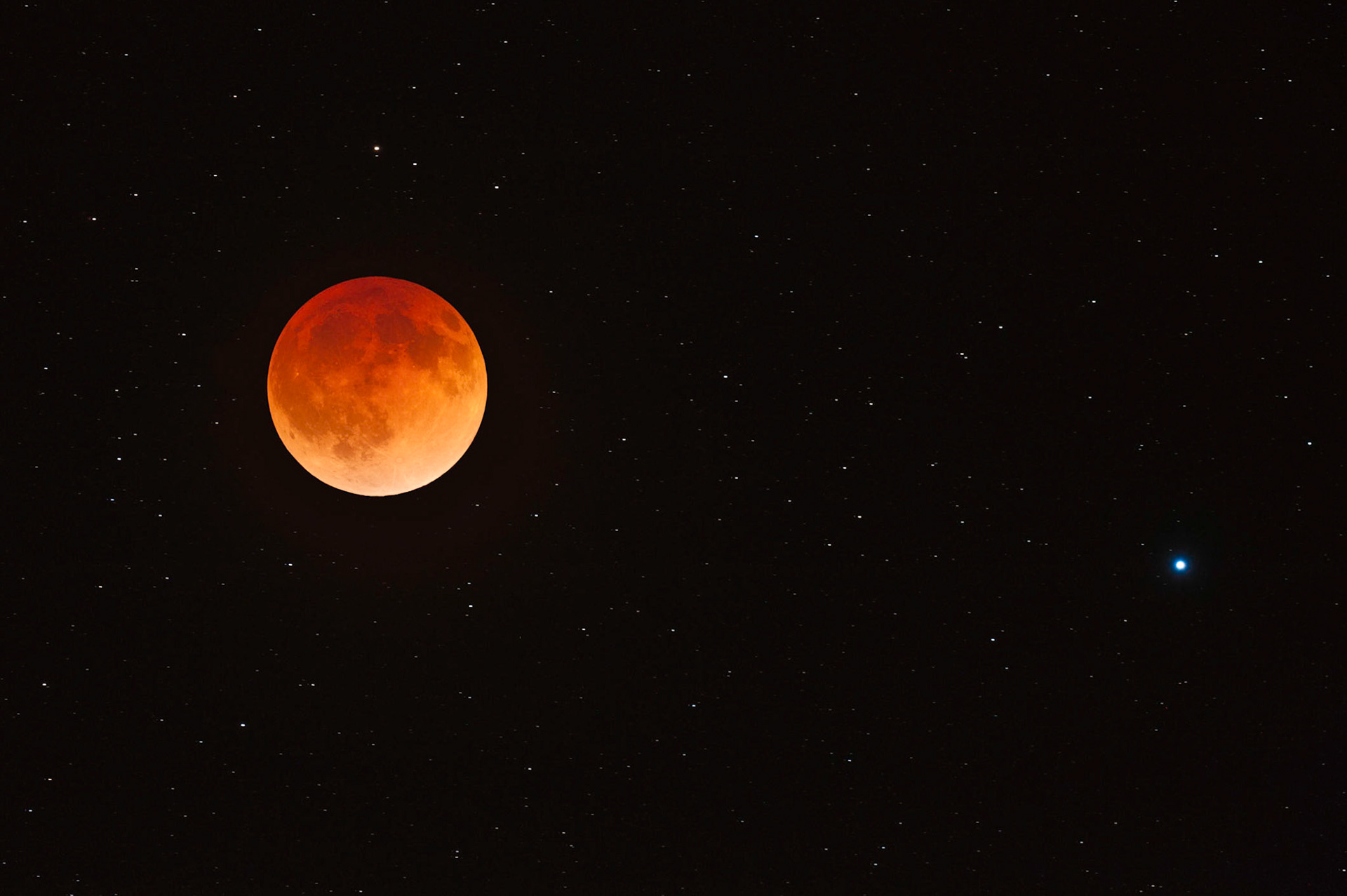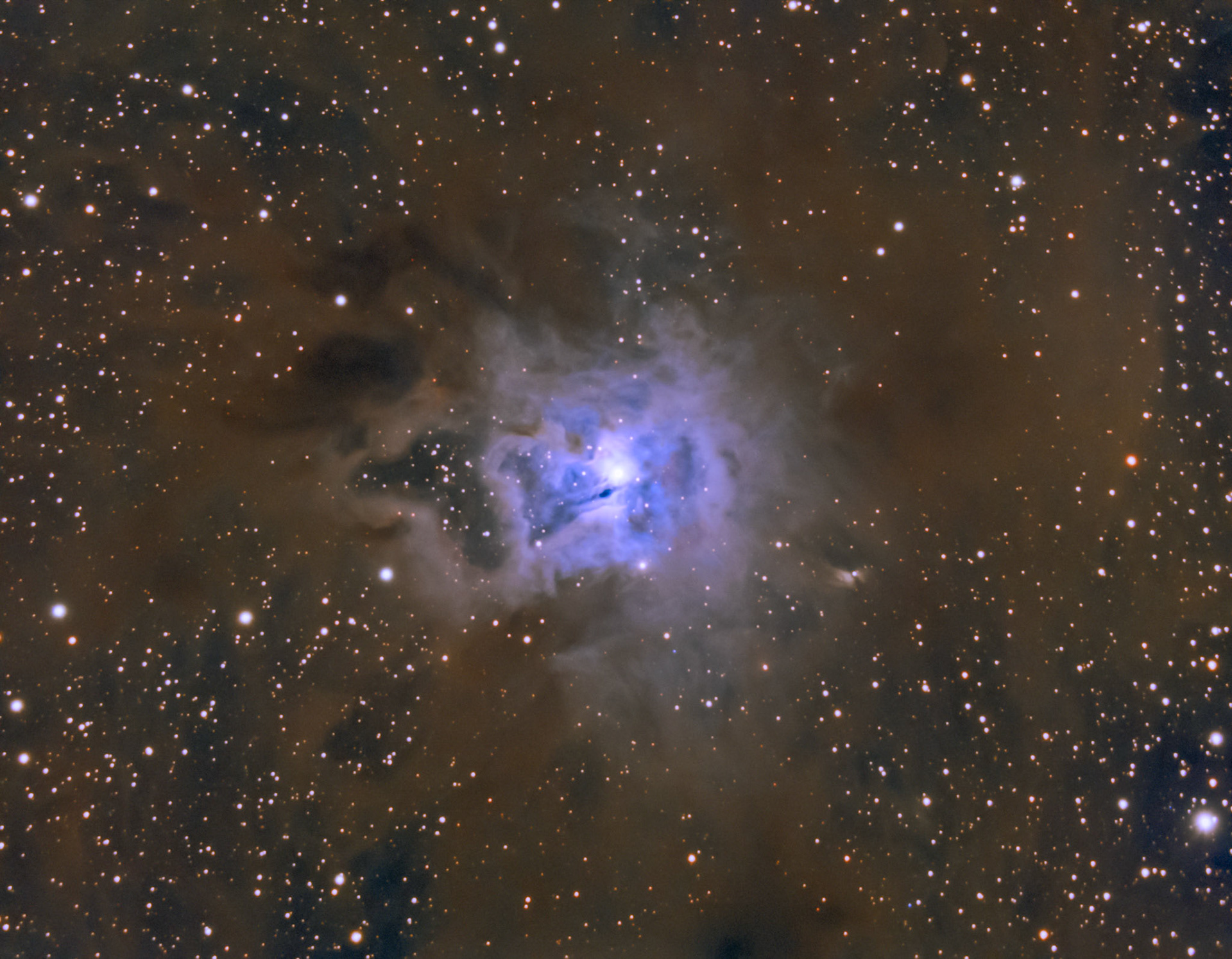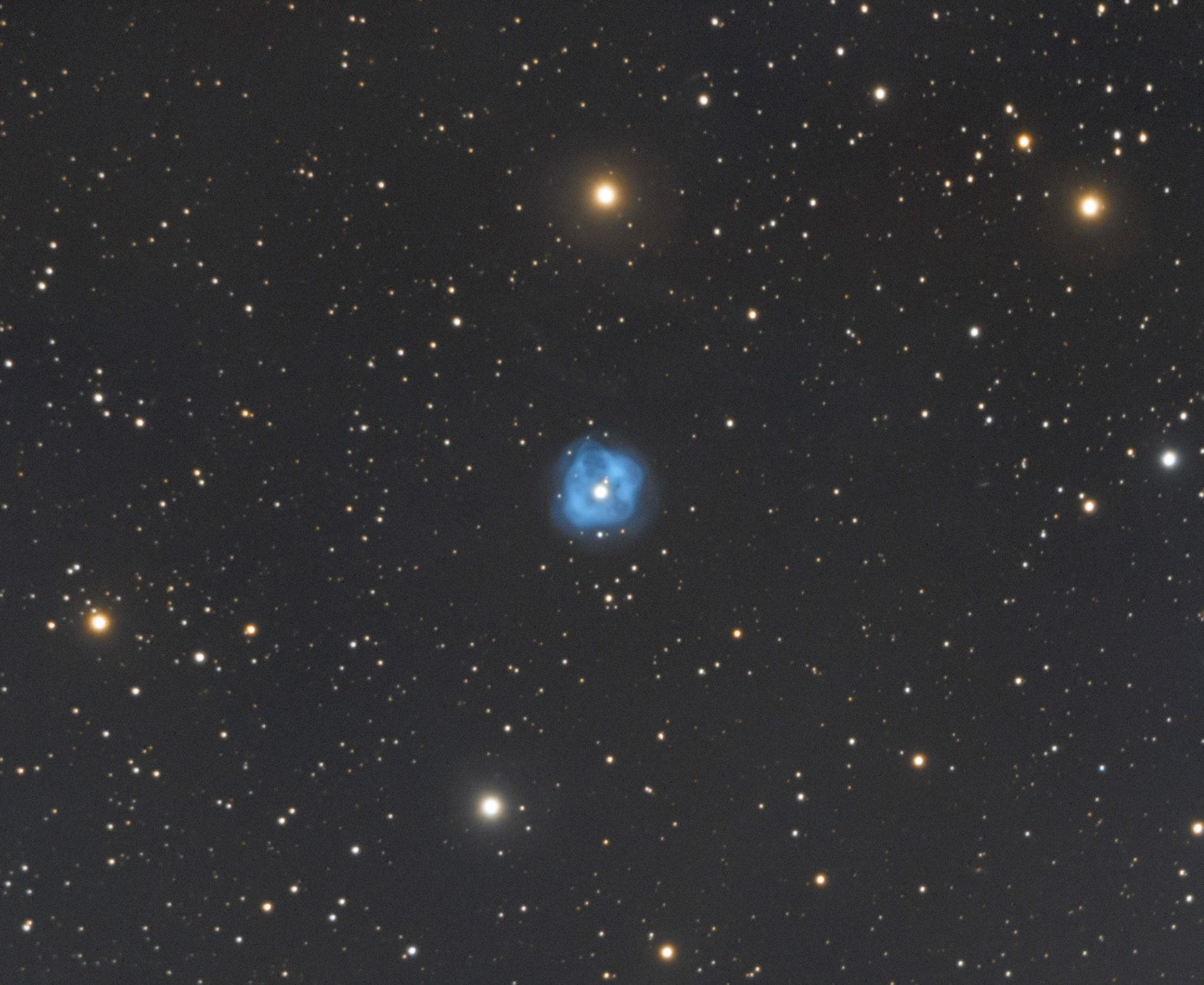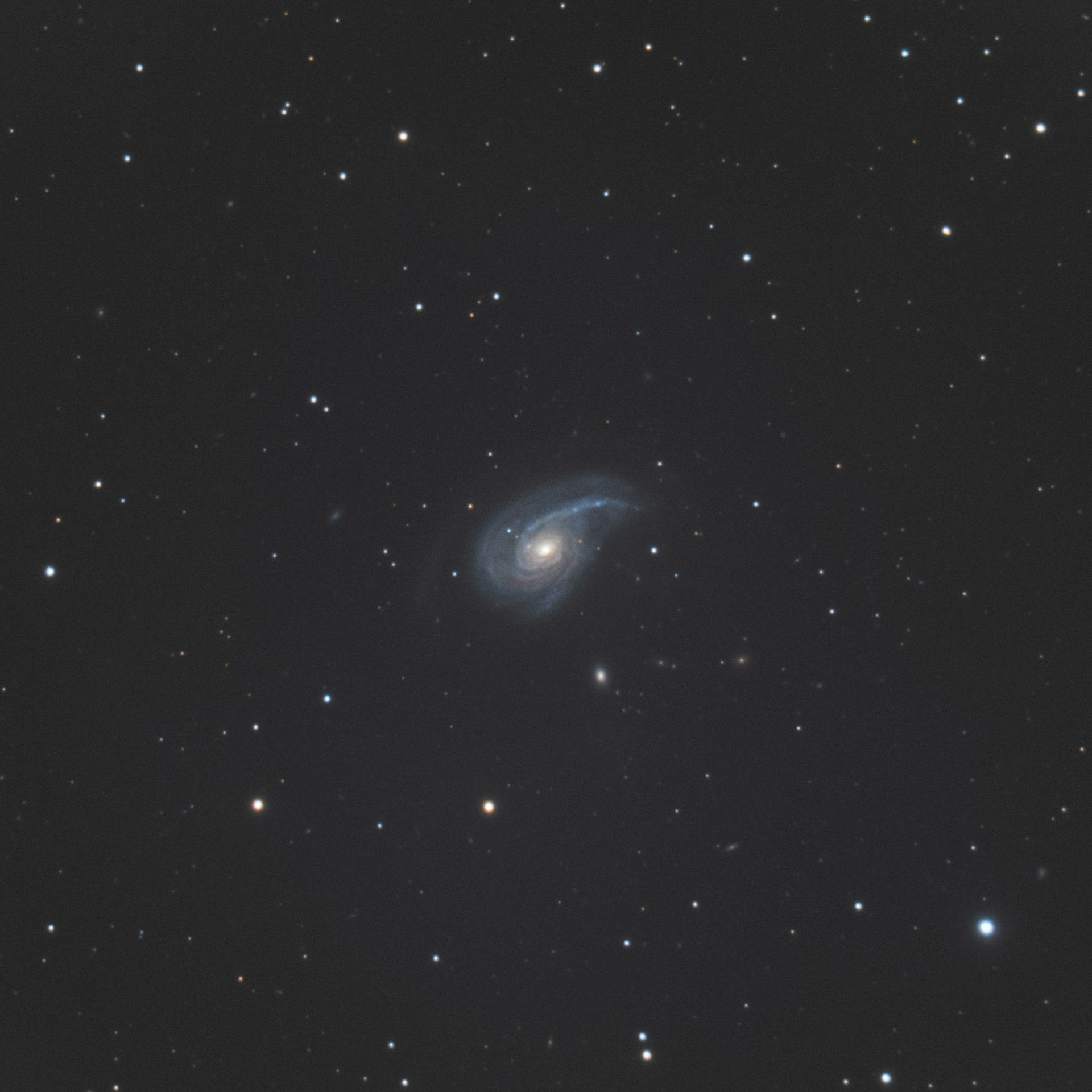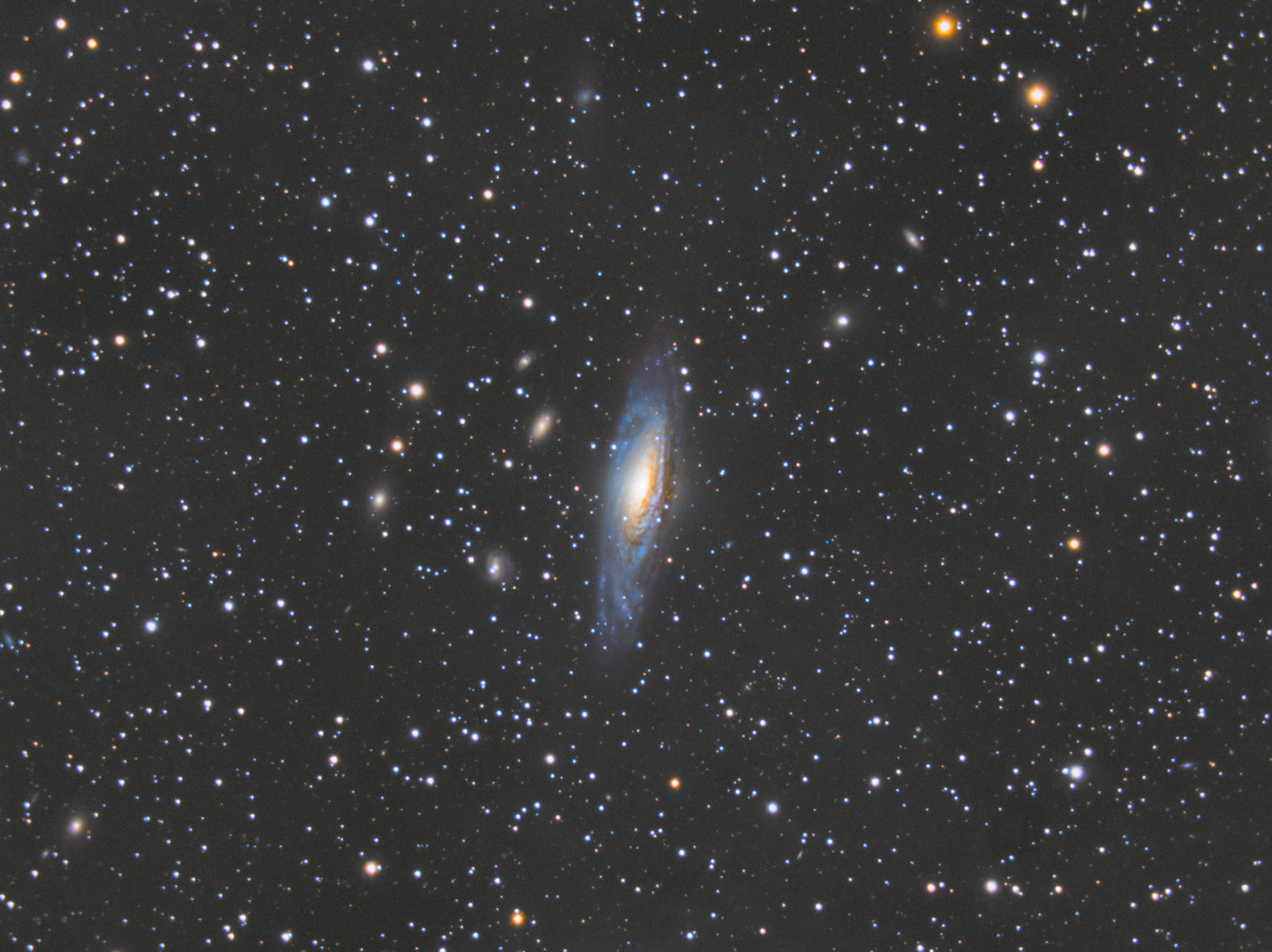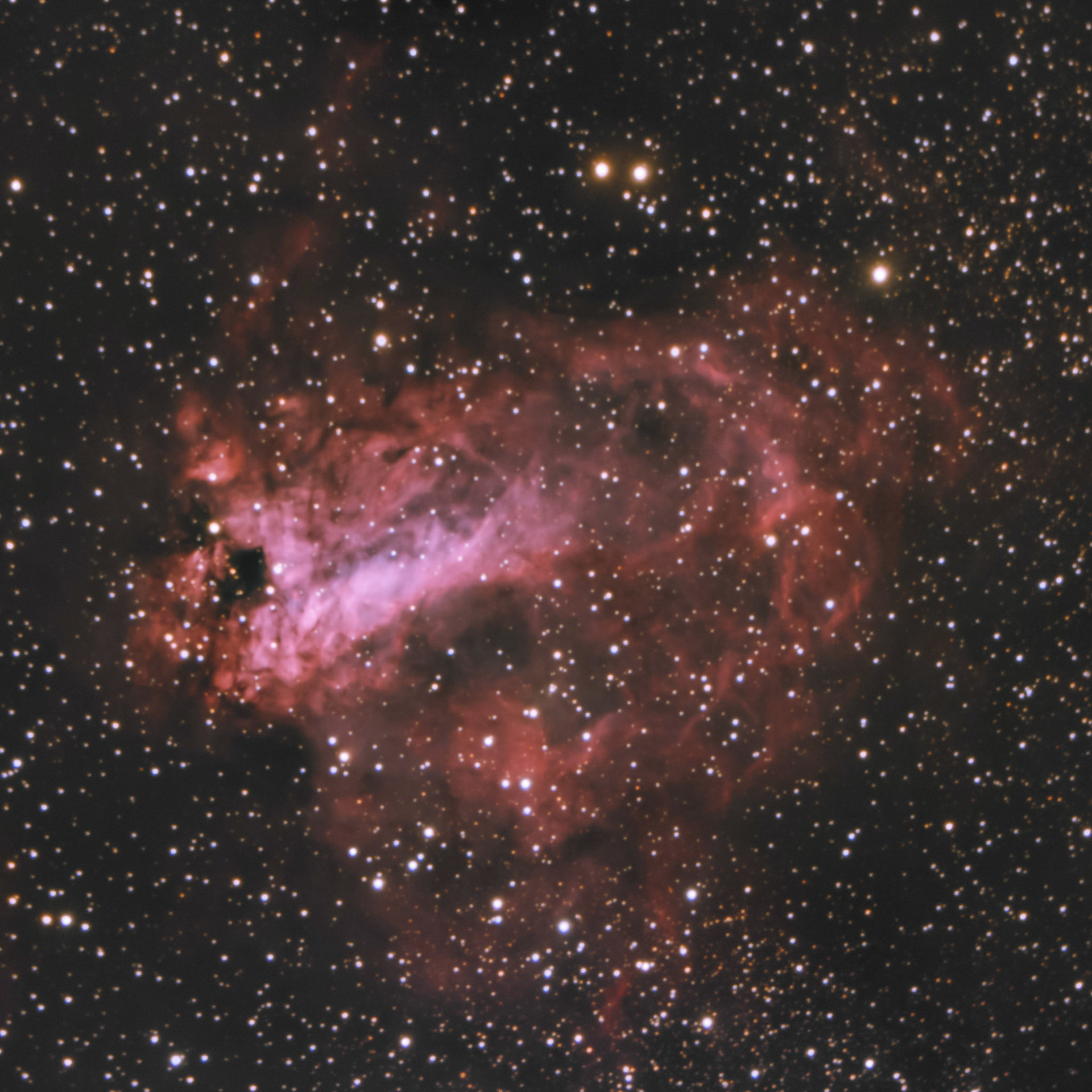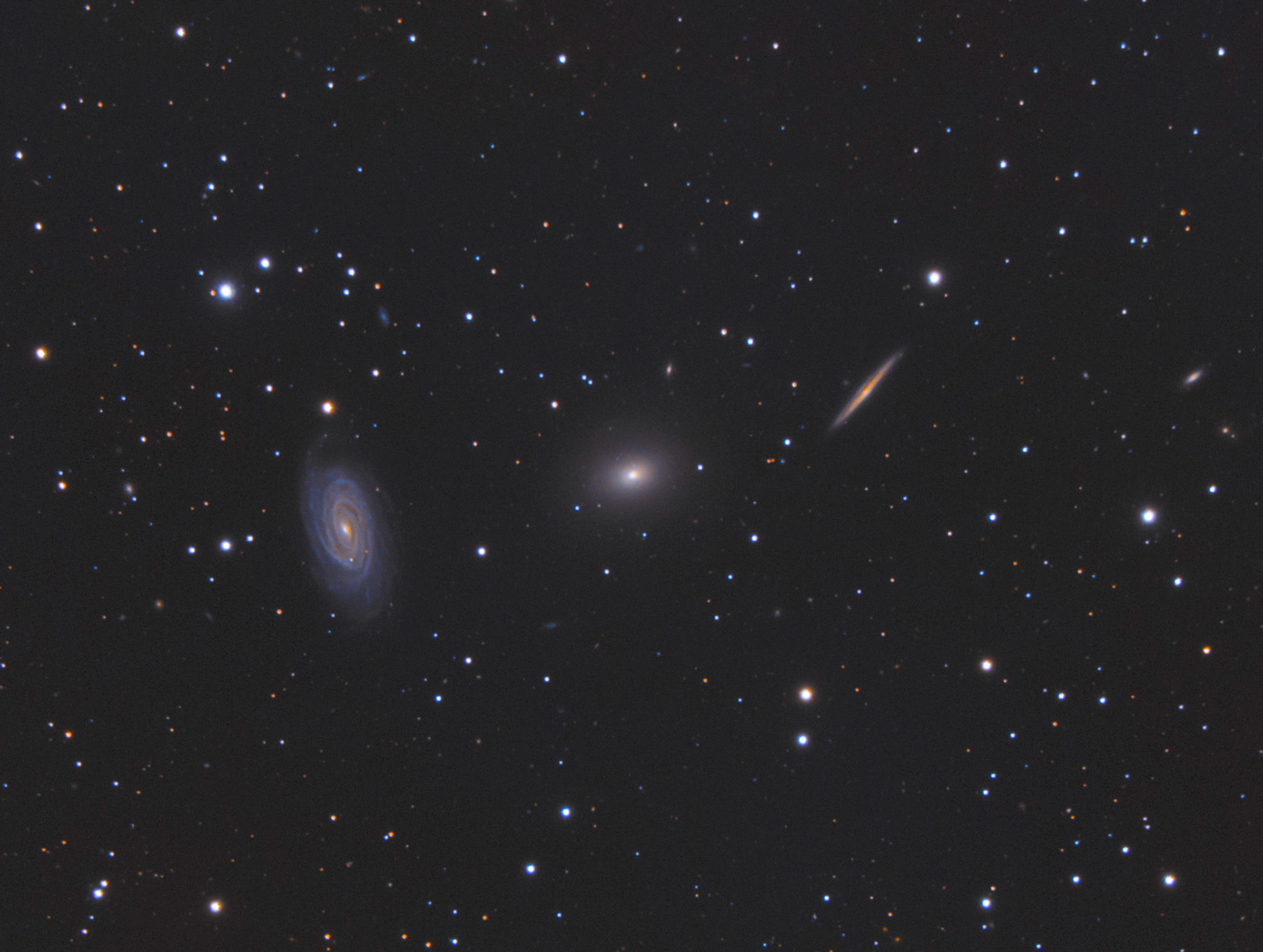
The Double ClusterThis pair of open clusters in the constellation Perseus is visible to the unaided eye under dark skies, but makes for a stunning view in a pair of binoculars or small telescope. It's in the NE right now after nightfall (between Perseus and Cassiopeia).Finally worked out the last of the electrical and hardware bugs and have the observatory ("Siskiyou Skies") up and running again. This image was made using twenty one 20 minute exposures (7 hours total) through my 530mm f/5 scope.

M 33 - The Triangulum Galaxy

The Pleiades star clusterAlso known as the Seven Sisters and Messier 45. This star cluster is relatively close (444 light-years) and easy to spot with the naked eye (look towards the southeast after dark for a small grouping of stars). What makes this cluster so photogenic though, is that it's embedded in clouds of dust. This is most obvious near the brighter stars where they shine directly on the nearby dust. If you look closely (especially in the lower right) you'll see that the dust clouds continue, but are harder to see because they are illuminated by more distant light.

North America and Pelican in Hydrogen AlphaThis one's a little different than my other astro-images. For one, you'll notice that it doesn't have any color. The other, maybe less obvious aspect, is that the nebulosity is very prominent compared to the stars in the image. These are because I took this image with a monochrome camera through a filter that only lets through a very narrow slice of the spectrum (called a "narrow band" filter).This particular filter only let's through light that is really close to the color that Hydrogen glows at. This wavelength is towards the red end of the visual spectrum so that's why most images of nebulae tend to be red (most nebulae are primarily hydrogen).You may also notice that these particular nebulae make pretty distinct shapes. The one of the left is known as the North America Nebula and the one on the right is the Pelican Nebula.

Cocoon Nebula

Dusty

The Deer Lick Group

The Draco TripletA nice grouping of three galaxies in the constellation Draco. Although it looks like they are close together, they only appear that way because they are roughly lined up along our line of sight.
